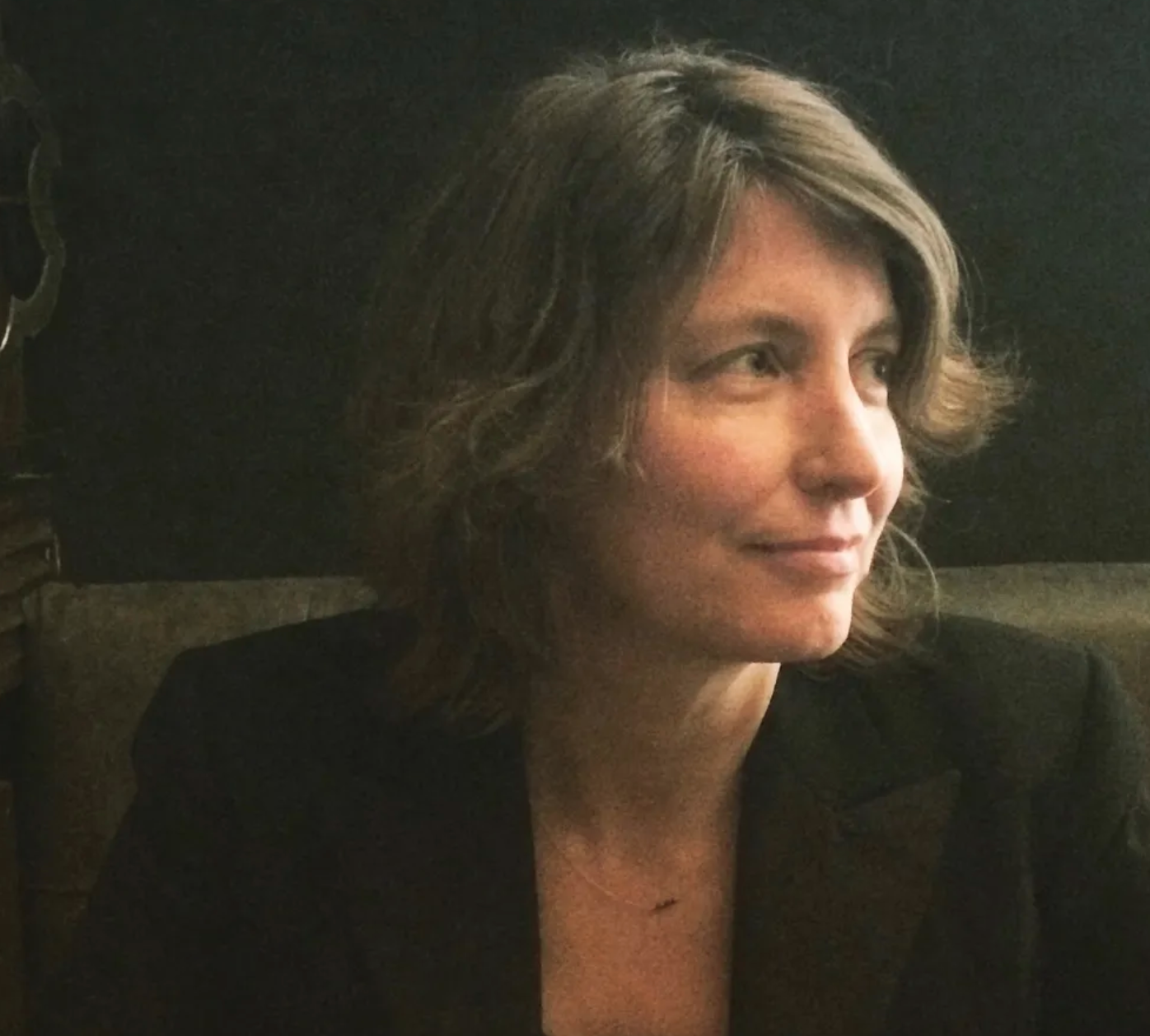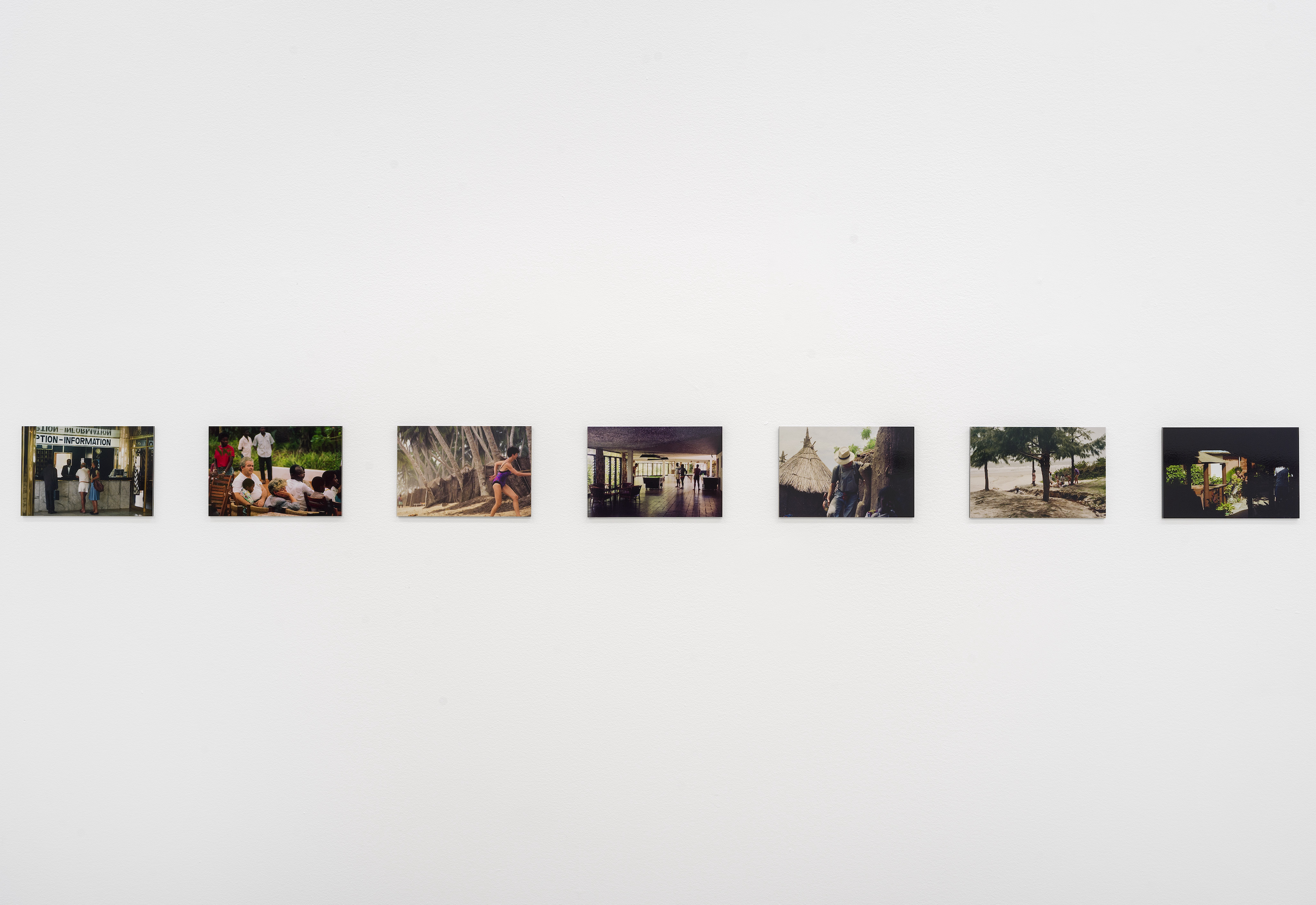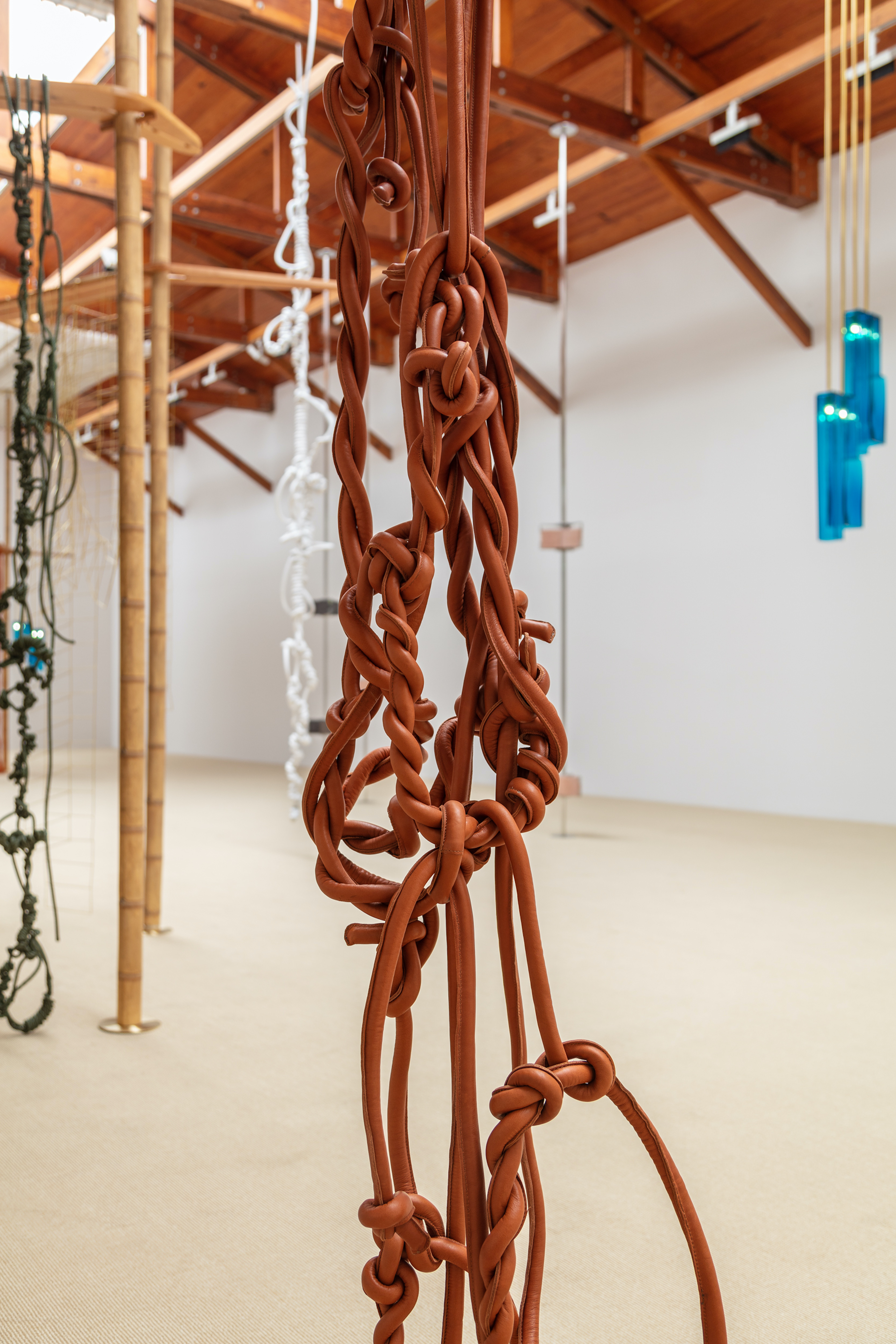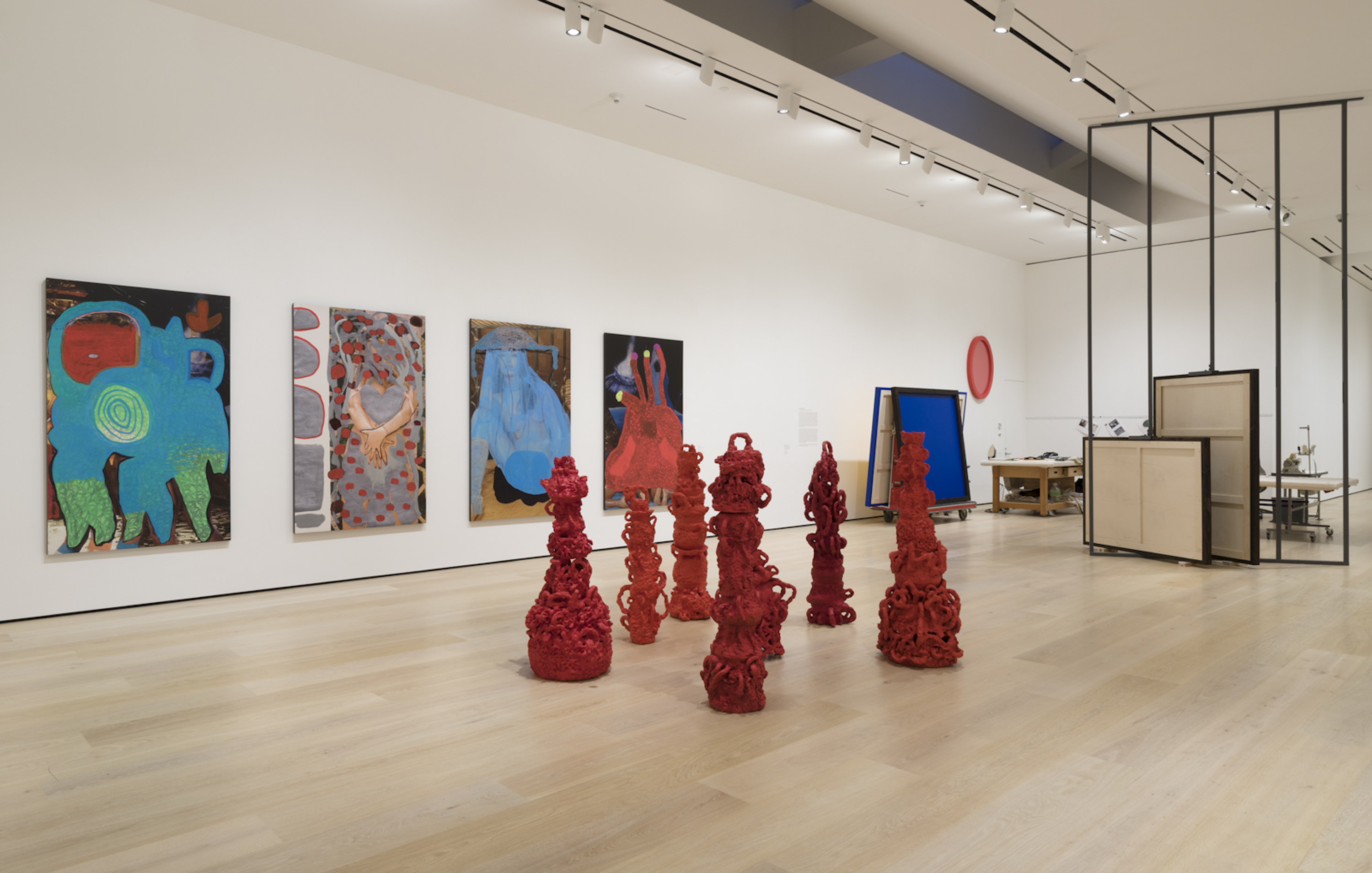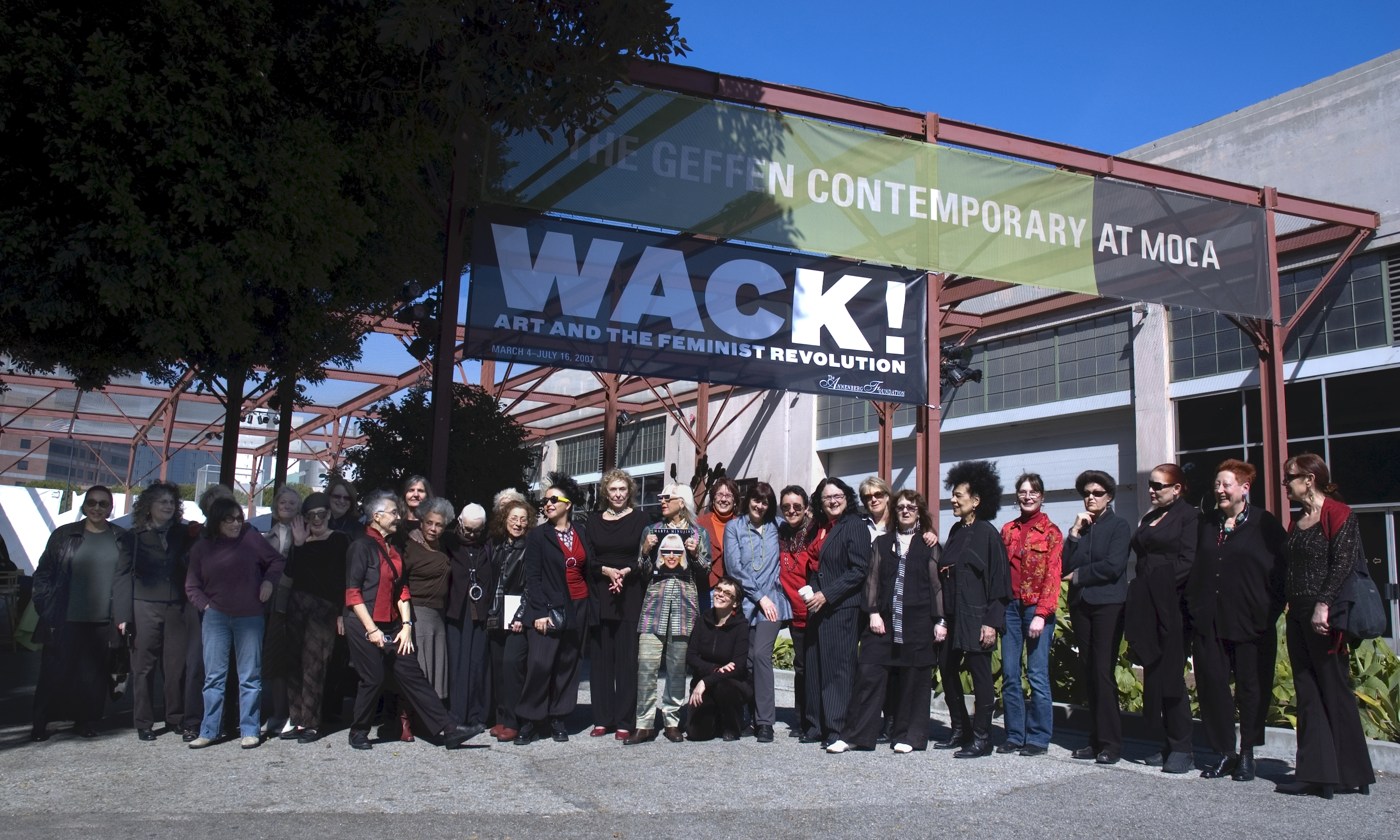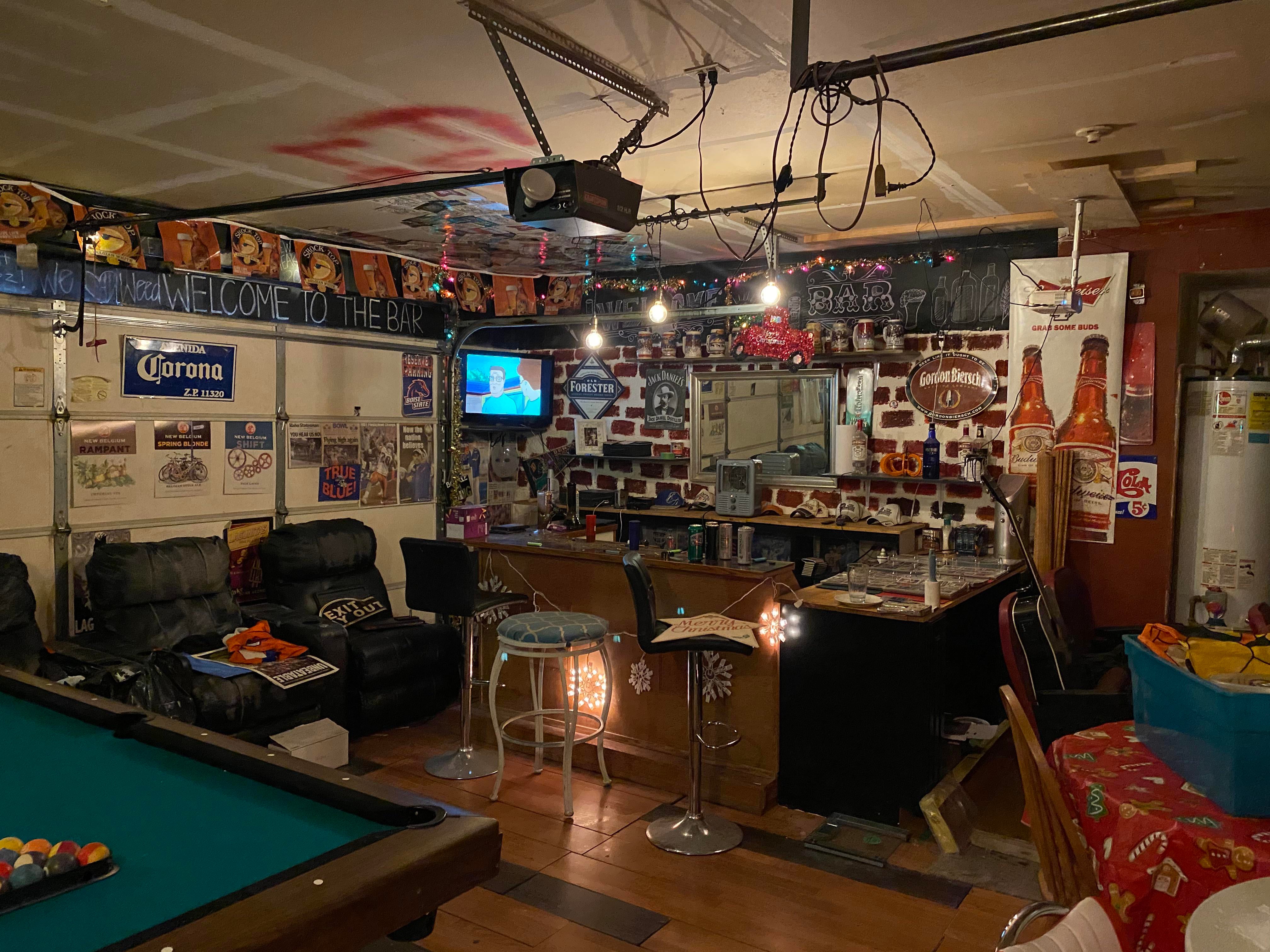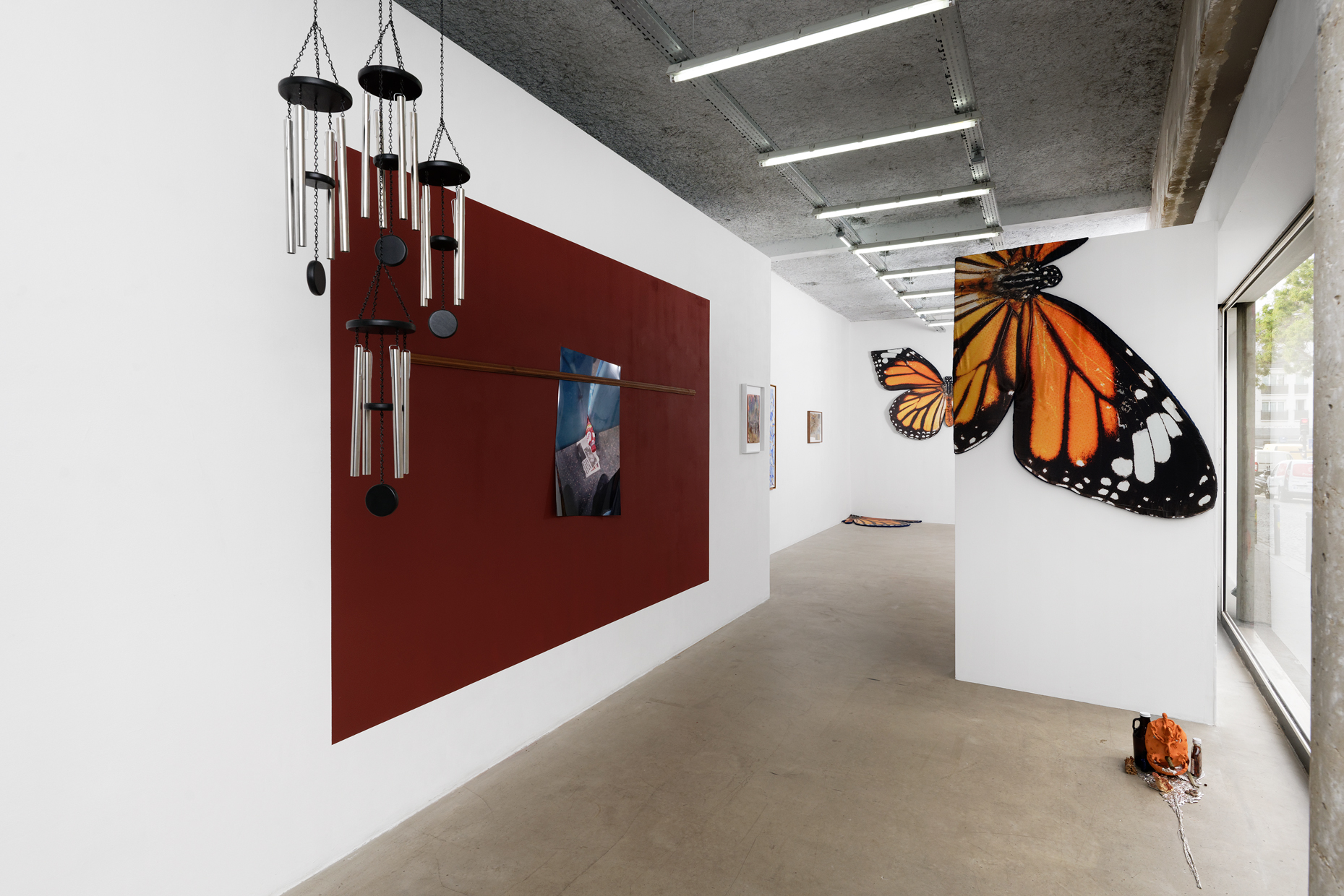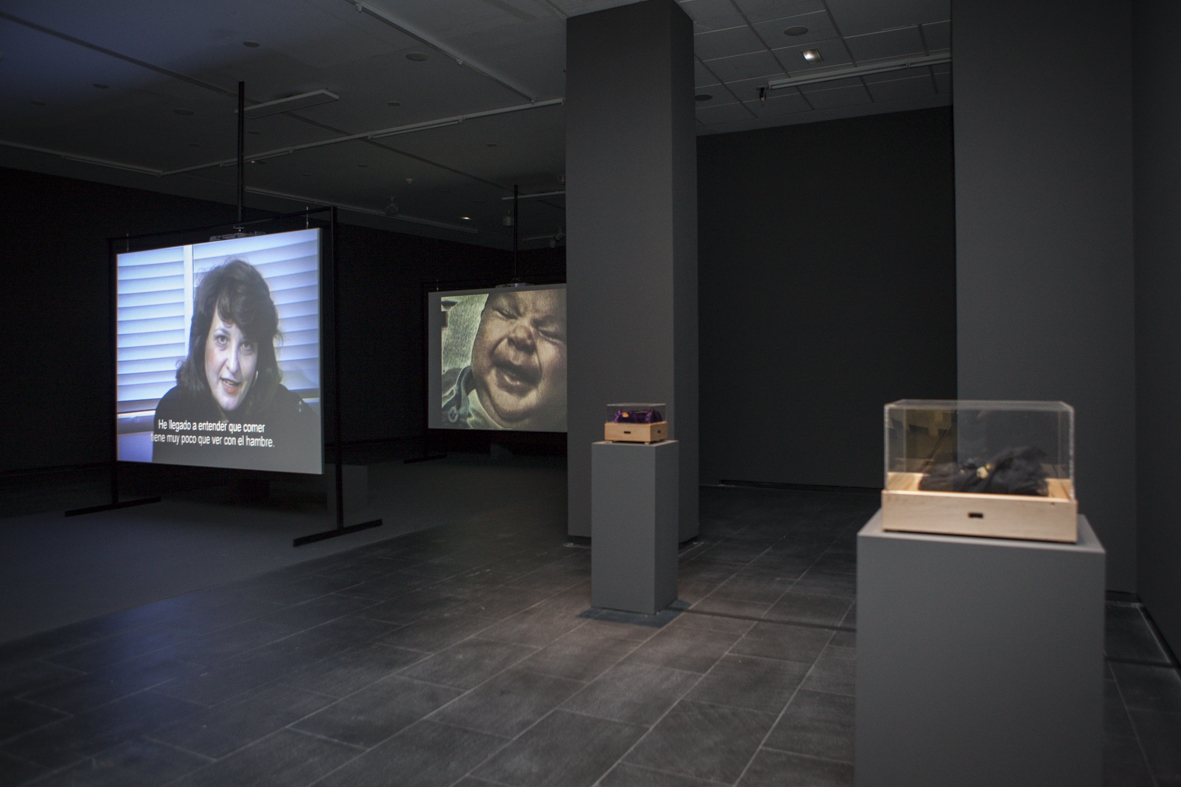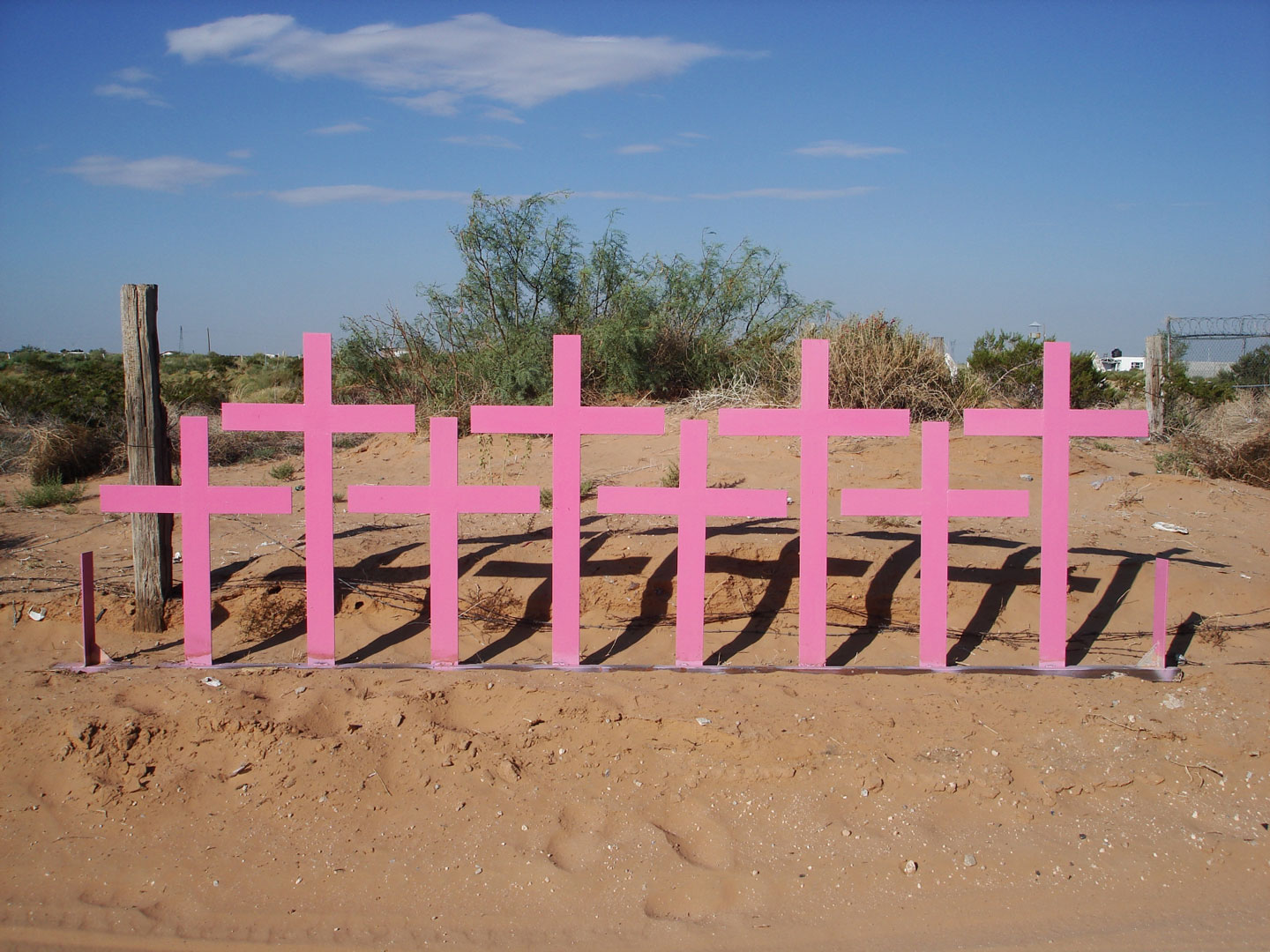STATEMENT A – SAY HER NAME
Rebeccah Blum was murdered last week. Her body was discovered in the apartment of a male artist. In the days after her death, tabloids and, later, some sections of the art press casually reported variations on the formula: “Brad Pitt’s friend, male artist X, was found dead at a location two hours outside Berlin. His gallerists are sad.” Only further down the report does the reader find out that he had confessed to killing “a woman” before fleeing the city. In some reports, her name was mentioned only in passing, in among a laundry list of Artist X’s career accomplishments. In others, all we get is the make and model of his getaway car. But she had a name. Rebeccah Blum was a woman, she was a valued member of Berlin’s art community, she was a mother, she had a profession and a rich life, and deserves to be remembered as such. Say her name.
At the same time, a campaign has been running on social media. The Women Supporting Women “challenge” sees women ask other women to post black-and-white pictures of themselves as a gesture of gender solidarity. Social media feeds are full of accepted challenges, and yet in the process of generating these images, something has also been erased. The challenge originated as a way to remember and pay homage to Turkish women, including Özgecan Aslan and Pınar Gültekin, who have been killed in instances of domestic abuse and gender violence.1 Yet as the images of purported solidarity started to appear, the reason for their existence became obscured. We saw solidarity mentioned as an abstract concept, but the names of the women the images are supposed to be honoring disappeared. Özgecan Aslan. Pınar Gültekin. Rebeccah Blum. SAY THEIR NAMES.2
Over recent days, friends, colleagues, and peers have been considering how to counter the initial response to Rebeccah’s death, and so we have compiled an obituary written by someone who knew her and an open letter in response to the way her death was first reported.
–Julieta Aranda
OBITUARY
Rebeccah Blum, a Berlin-based American independent curator, editor, mother, gallery manager, and art historian, has died. She leaves behind a daughter, Emma Blum, and a legacy of important work in the Berlin art scene.
Blum was an active member of the Berlin art community for 25 years, especially renowned for her skills in project management and translation. Since 2012, she ran Blum Fine Art Management, which supported artists, collectors, and galleries with administration and other services and operated as an outsourced project and production management firm for cultural institutions.
Blum was born in Berkeley, California, grew up in Philadelphia, and studied art history at the American University in Washington D.C. (1985–89). After working in a gallery in San Francisco, she moved to Düsseldorf, Germany, in 1992, where she curated a series of exhibitions in mostly private rooms encouraging the work of artists including Monika Baer, Jürgen Drescher, Stefan Hoderlein and Dirk Skreber, and the curators Matthias Winzen and Sabine B. Vogel. She moved to Berlin in 1995, and founded the non-profit initiative Base e.V. – Kunstverein ohne Heimat, an open curatorial platform.
In 2007, Blum was commissioned by the gallery owner Aurel Scheibler to set up the “Scheibler Mitte” project space, which later developed into the well-respected gallery. There, she worked on exhibitions and publications of work by Alice Neel, Michael Auder, Öyvind Fahlström, Mark Lombardi, Jorinde Voigt, Ad Reinhardt, and others. She co-founded the art and science platform Satellite Berlin with the former gallerist Kit Schulte, which ran between 2014 and 2017. She also worked as the European representative for David Nolan Gallery in New York, and lectured, edited, translated, and wrote essays for numerous artist publications and exhibition catalogues.
Her publishing career began at the art publisher Verlag der Kunst’s office in Berlin in the mid-1990s. She also worked with the artist and publisher Erich Maas’s Maas Verlag, and on the internet platform TXT- Server for Independent Publishers, founded by Maas and Ulf Schleth. She was later involved in the conception and production of two in-house publication series for Aurel Scheibler and Satellite Berlin respectively. Fluent in German and English and known for her acute editing skills, Blum also ran The Wordsmith, which specialized in translation, copywriting, editing, and production services for mostly bilingual art catalogues and publications, as well as magazines and trade publications.
In an Instagram post, her daughter Emma Blum wrote, “I love her so much and I miss her so terribly. She was just by [sic] taken from me, without warning and in such a violent way by one of the people she loved. I can never forgive this and I can never forget this. I want her name to be remembered and nobody else’s.”
–Matthew Post (Post Brothers)
OPEN LETTER TO THE EDITOR OF ARTNEWS
Dear ArtNews Editor,
I am writing this letter in response to a recent article in ArtNews, “Artist Saul Fletcher Dead in Apparent Murder-Suicide” by Maximilíano Durón, published online on July 27, 2020.
This article is extremely problematic. That superficial changes have since been made to the article, presumably in response to the outcry on social media, should not obscure this fact.
The headline of the article, which announces an “apparent murder-suicide,” only names the apparent murderer. It tells the reader that he is an artist before it names her; the piece is about him, not her. ArtNews chose to publish a photo of Rebeccah Blum’s murderer rather than publish an image of her—humanizing him before it humanizes her. This photograph, credited Knust Kunz Gallery Editions, is a promotional photo, a portrait of the artist. We do not see a professional portrait of Rebeccah; we are not given insight into her importance in the Berlin art community.
We are directed to view his personhood and not hers. The article lists his achievements and circles around his celebrity, mentioning his friendship with Brad Pitt (“Saul Fletcher was photographed by paparazzi last year walking around the Venice Biennale with Pitt and sculptor Thomas Houseago”) before we read the name Rebeccah Blum. How is this possible? How did this piece go through an editorial process without someone pointing out its glaring misogyny?
This man, you report, confessed to having killed a woman. This person, the reader is told, killed another person and then killed himself. This man murdered a woman. This man murdered a woman in a world in which misogyny and femicide run rampant, where the numbers of women killed by someone she knows are staggering.
Why are his artistic achievements being discussed in this article at all? Albeit not glowing, why are a famous critic’s words on his work quoted? What does the nature and quality of his work have to do with the fact that he killed someone? Why aren’t any of Rebeccah Blum’s professional achievements listed? Why is she a footnote in the story of her murder?
When the article finally addresses Rebeccah Blum, we are only given one sentence. “Blum is a freelance curator who previously was director of Berlin’s Aurel Scheibler gallery.” This is the only sentence about her life and career. And it’s hazy. What is made clear, however, is that to the world at large and to the art world, she is considered to be less than him. Even on the page, her murderer has more power and status than she does. [Editor’s note: This sentence was on 29 July expanded into a short paragraph, linking to an obituary of Blum written two days later.]
The report erased Rebeccah Blum, the woman who was murdered. But this is her story. This is the story about the life she led, her creative contributions and community, the people in her life, her family and how her life was violently taken from her. This is the story of her murder, the story of extreme gender violence, domestic violence and femicide. This is Rebeccah’s story, one within scores of stories of women who are murdered every day by people they know.
Rebeccah Blum and her name must be central to her story. Any writing on this violent tragedy must make her the subject of her own murder. Not doing so perpetuates and participates in the culture that makes these types of murders so frequent and widespread, at a time when domestic violence is on the rise globally. 3
When male artists kill women, why do we focus on their status as artists? Why do we focus on their commercial success and proximity to celebrity? When men kill women, why do we focus on the man’s personhood over hers? The impulse to forever preserve white, cis, heterosexual personhood over any actions they commit exists as a divisive tool in the objectification of other groups of people.
A joint statement issued by his galleries (Anton Kern Gallery in New York, Knust Kunz Gallery Editions in Munich, and Grice Bench in Los Ángeles) reads: “We are devastated, appalled, and shocked by the tragic loss of Rebeccah Blum and Saul Fletcher.” This is written in a passive voice. As if the two were in a car crash, as if murdering a woman is an accident, just something that happens in the world. Loss; like they both just slipped away. As if what happened was vague and shrouded in mystery. Why is it so difficult and taboo to talk about femicide? Why is talking about it more difficult than witnessing it happening repeatedly? The language in the galleries’ joint statement and in this article is misogynistic. It perpetuates and participates in a system that, at its extreme, leads to gendered violence, femicide, and murder.
The reporting of this tragedy speaks to all women and marginalized peoples. It communicates that we are not subjects, even in the stories of our violent deaths. It communicates that men will always take up more space. That cis, white, heterosexual men will always have more power. For the purpose of this letter, I am writing in binary terms while acknowledging queer and trans communities, of which I am a part; communities that are subject to the same gendered violence and rampant misogyny that is central to this murder.
I want more from ArtNews than I get from the Daily Mail. I expect more from ArtNews, and from the art world. This period of time has, globally, been a period of reckoning with death, murder, and injustice. The article falls short not only of acknowledging the facts of the situation it is reporting on, but of offering what is absolutely needed at this time—to look with critical eyes at injustice, to focus on the people hurt by it. To be brave, to confront corrosive societal norms, to consider situations with empathy and love.
Sincerely,
Jillian McManemin
STATEMENT B – SAME AS IT EVER WAS: “HE BROKE SOMETHING”
Some statistics:
In Mexico, one of the countries with the worst indexes of violence against women, feminicides are on the increase.4 April 2020 was the deadliest month in the last five years, with a record 267 murders of women.
According to the Federal Criminal Police Office (BKA), violence against women has been increasing in Germany. In 2018, 122 women were murdered, and more than 114,000 women were abused by their partner or ex-partner, though the vast majority of these cases go unreported.
A 2018 report by the United Nations Office on Drugs and Crime (UNODC) reported that an average of 137 women across the world are killed by a partner or family member every day.
In 1985, Ana Mendieta fell 34 floors from the window of her apartment in New York during a violent row with her famous artist husband. Despite carrying marks of a struggle on his face, changing his story, and the testimony of a doorman who heard a woman screaming “no” several times in the moments before her body hit the ground, he was acquitted of her murder. He continues to enjoy a successful career to this day, notably a 2017 retrospective at The Museum of Contemporary Art, Los Angeles. The position of Philipp Vergne—director of the institution and co-curator of the show—was made clear by his comments to the New Yorker’s Calvin Tomkins, in a 2011 profile: “Carl broke something, and he was ostracized, and it’s part of the story. But the work is there. We are a museum, not a court of law, and he is one of the most important artists of our time.” He didn’t kill Ana Mendieta. He “broke something.”
It is remarkable that, in a field like contemporary art—which claims to be both adept at imagining the future and at proposing instances and avenues for social justice—it is as if no time has passed between 1985 and 2020. We must make sure that Rebeccah Blum’s name is not erased from the coverage of her own death. Remember her. Say her name.
–Julieta Aranda
For further details on the “We Will Stop Femicide Platform” visit http://www.kadincinayetlerinidurduracagiz.net/for-english
The #SayHerName campaign was launched in 2014 to raise awareness of police brutality against Black women and girls in the US. https://aapf.org/sayhername
See Liz Ford, “'Calamitous': domestic violence set to soar by 20% during global lockdown,” The Guardian, April 28, 2020: https://www.theguardian.com/global-development/2020/apr/28/calamitous-domestic-violence-set-to-soar-by-20-during-global-lockdown-coronavirus
Feminicide and femicide are often used interchangeably to denote endemic gendered violence against women, but the former term, coined by Jill Radford and Diana Russell, places extra emphasis on the fact that this violence is made possible by the inaction and implicit collusion of state structures.
